I wouldn't normally spend £750 on a coffee machine, but the De'Longhi Rivelia is worth the splurge
Even the savviest coffee sipper will feel chipper about this
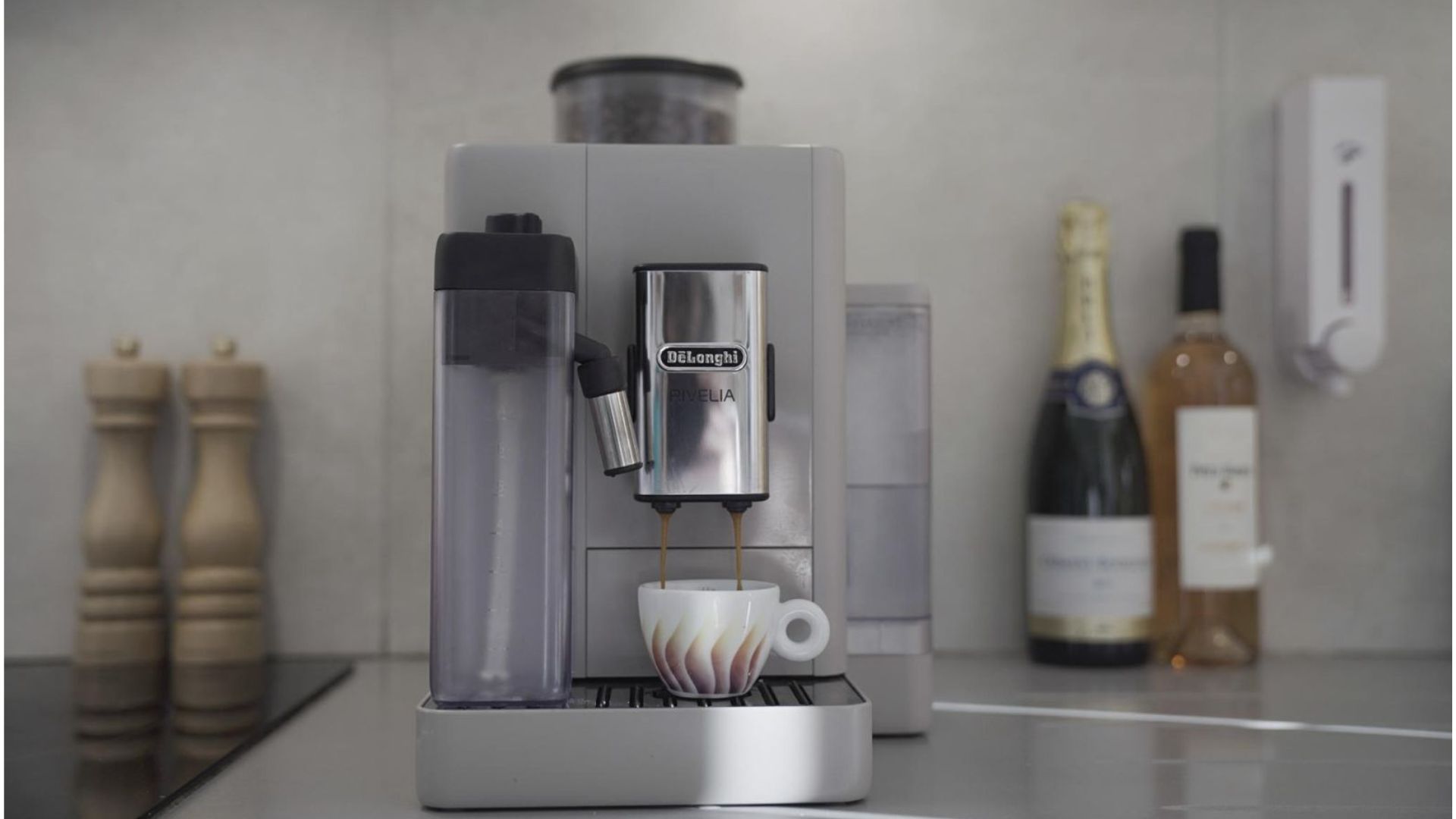
£750 isn't actually a lot of money for a fully automatic, super customisable, smart coffee machine. This is consistent and nuanced with its approach to every order that I make. It's just quite deep.
-
+
Intuitive interface with 4 different user profiles
-
+
Range of different, simple colourways to suit any kitchen
-
+
Can froth dairy and non-dairy milks really well
-
-
Comes out quite a long way
-
-
Expensive if you don't need an elaborate machine
Why you can trust Woman & Home

The De'Longhi Rivelia is one of the brand's greatest fully automatic coffee machines on the market. Even though some people say that it's expensive, I think £750 is a steal. Hear me out.
As a former barista and coffee snob, I've never struggled to criticise a coffee machine before. There are always some tweaks that I would make with a drip tray, grind setting, or pour strength. However, with the De'Longhi Rivelia, I'm stumped. This is easily one of the best coffee machines I've ever used.
The relatively compact, £750 machine comes complete with four user profiles, customisable settings, and hot and cold coffee functions. It steams regular almond milk, turns cheap beans into something special, and will anticipate and predict your coffee needs before you're even thinking about them.
Specifications
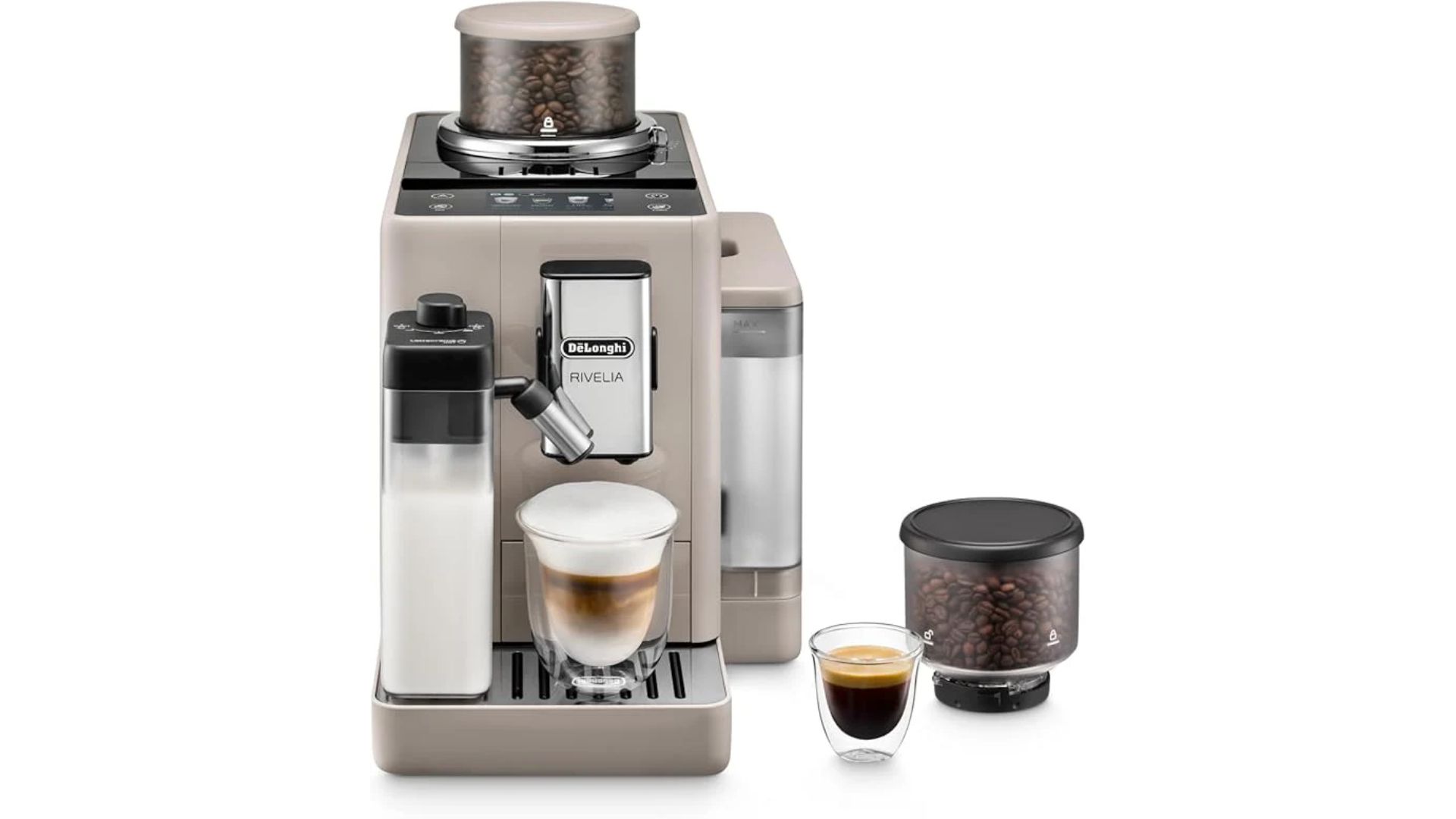
| Dimensions | 43 x 24.5 x 38.5 cm |
| Weight | 9.7 kgs |
| Colour options | Onyx Black, Arctic White, Pebble Grey and Sand Beige |
| Bean hopper capacity | 2 x 250g hoppers |
| Water tank capacity | 1.4 litres |
| Coffee settings | Cold Americano, cold coffee, cold espresso, espresso, espresso lungo, coffee, long, Americano, cappuccino, hot milk, caffelatte, flat white, cortado, espresso macchiato, hot water |
| Pressure | 19 bars |
| Material | Plastic with metal |
| Power | 1450 watts |
| User profiles | 4 |
| Warranty | 1 year |
Unboxing
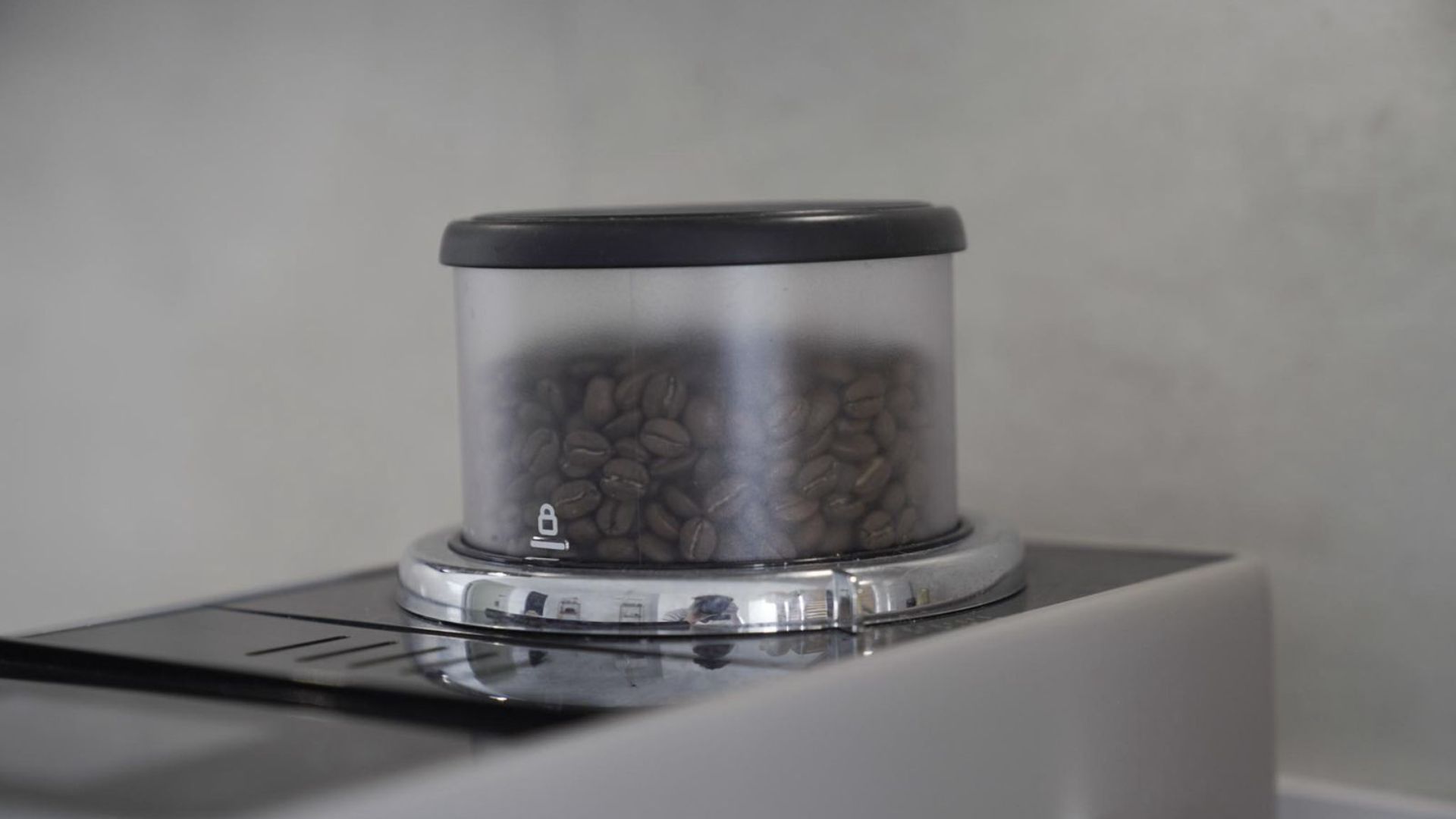
Before you invest in any coffee machine, you’ll do your research. De’Longhi brands this their ‘super compact’ bean-to-cup machine, but lots of other people describe it as chunky. I’m here to put the record straight. As far as automatic coffee machines go, this is compact. It packs an incredible amount of power, technology, and versatility into one block. The one notable aspect of the Rivelia’s size is how deep it is. This comes out 43cm onto the counter, so if you have slim work surfaces, this will be best positioned in a corner, where you can afford a bit more space.
Now that’s out of the way, I can get into more of the unboxing details. This comes in a relatively compact box — for the size of any automatic coffee machine — that’s easy to lift and move around. Everything pretty much comes in one piece: you get the Rivelia, a water filter, and a water hardness tester (together these would cost you over £10) as well as a milk frothing device, scoop, brush, and waterspout. I didn’t spot all of these at first, because they tuck into a neat storage compartment on top of the machine, which any kitchen will be really grateful for. I can’t overstate how important it is to keep all your coffee accessories together, otherwise, they loose all meaning and you’ll throw them away or leave them collecting dust.
You’ll also get the famously exciting experience of having two bean hoppers. Each hopper holds 250g of coffee beans (enough for about 15 coffees) and they can be twisted on and off your machine. If you’re not already invested in home brewing, you might wonder why having two bean hoppers is useful. It is, in actual fact, game-changing. Everyone has their favourite beans and, if they don’t, they’ll at least have decaf and regular beans for enjoying coffee flavours later into the evening. Overall, having two bean hoppers lets you switch between two different types, whether that’s to suit your and your partner’s palettes or decaf and caffeinated. I didn’t realise how much I needed this until I had it on the Rivelia. Now, I’m not quite sure how to go back.
Who would it suit?
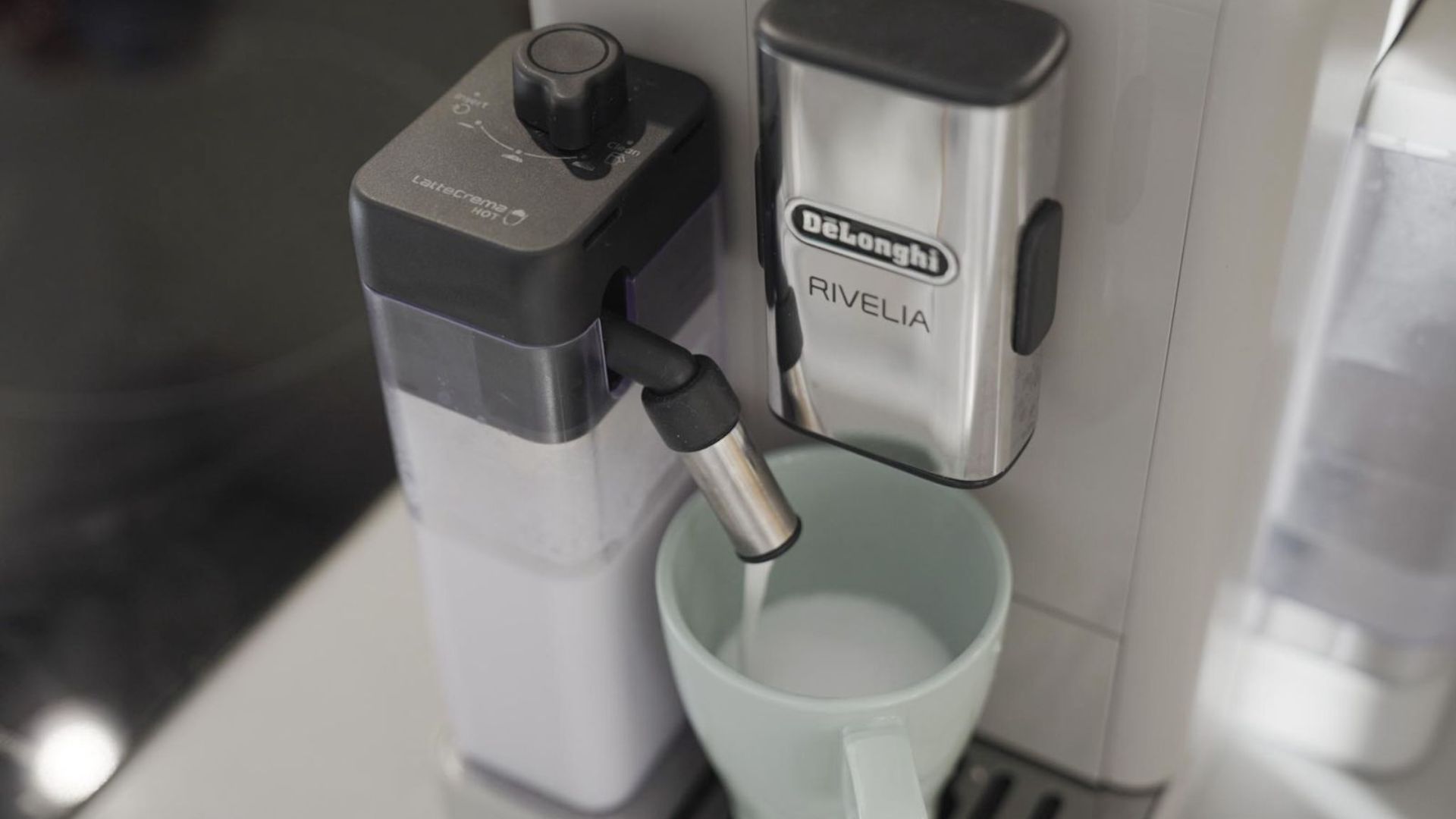
The Rivelia’s bean-to-cup ease and speciality flavours make it an easy choice for anyone who wants easy, speedy, consistently delicious coffee at home. However, where it really thrives is in busy homes. The Rivelia comes with four different user profiles: you can set your flavour, strength, and coffee preferences, then click on your profile, and the Rivelia automatically makes adjustments that will tickle your tastebuds. It will then also learn your preferences and suggest coffee to you at the times of day that you normally consume it. So, if, for example, you like a latte in the morning and an espresso around midday, your Rivelia will pop up with a suggestion at the exact time that you normally opt for one. Very clever.
It almost goes without saying that this makes a delicious cup of coffee, whether you want an iced almond milk latte or a double-shot espresso (there are sixteen iced and cold coffees on the menu). I’ve methodically made my way through them and can confirm that this is on the money, every time. It’s also quick and mess-free, so why doesn’t everyone have one in their homes?
The Rivelia will set you back about £750. If you’ve done any research into automatic bean-to-cup coffee machines, you’ll know that this is actually pretty good value. I know, that makes me sound out of touch, but I’ve tested almost identical models that are twice the price. When you put it like that (and shop around for a deal) you’ll realise that this isn’t bad value. It’s just a big upfront cost.
What is it like to use?
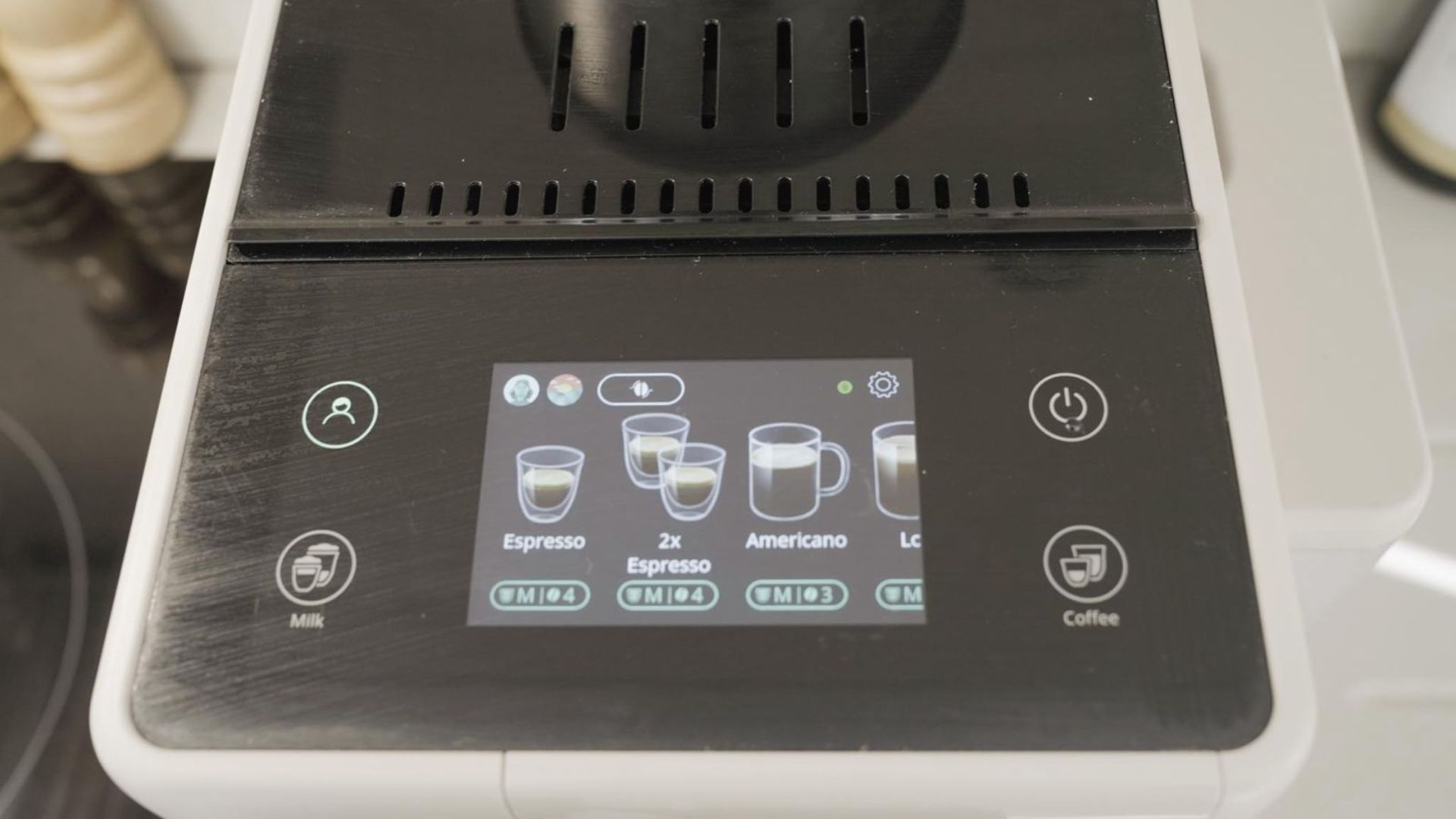
Techy machines with smart screens can be a bit intimidating, especially if you’ve always worked on old-school espresso machines. Luckily, De’Longhi’s intuitive interface makes life easy. It walks you through the whole set-up process, step by step. It’ll have you testing water hardness, sampling coffee so you can brew at your flavour preferences, and more. You read that right. This will consult your roast and bean type to optimise the grind and brew for your beans. In spite of all that smartness, within five minutes, you’ll be a whiz on this elegant, intelligent machine.
Test 1: espresso
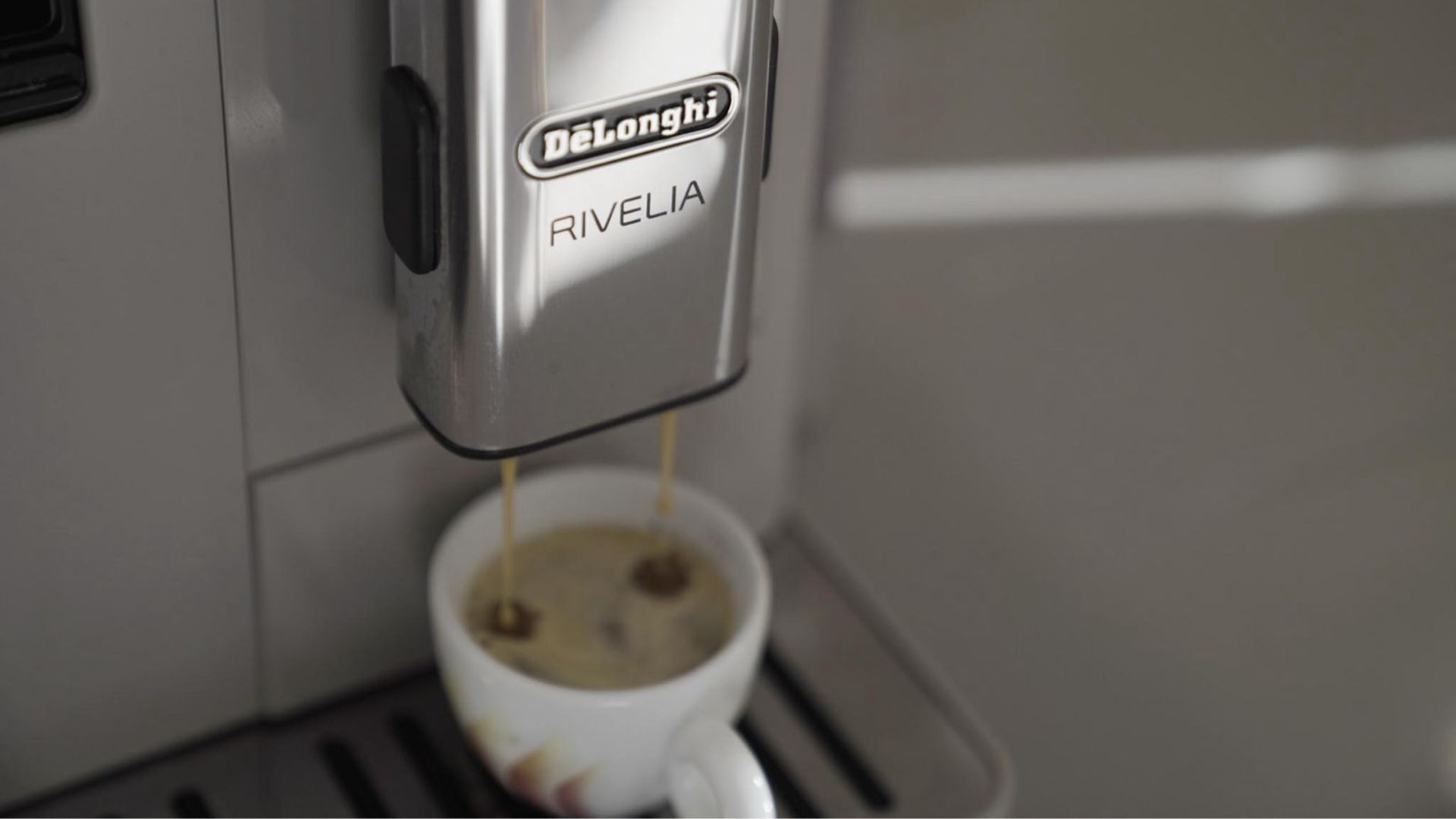
My first test for any coffee machine is always an espresso — it’s the ultimate building block of coffee. From turning the machine on in the morning to a fully brewed espresso, I only need a minute, the machine warms up in just over 40 seconds, then I faff around, and the espresso brews in 20 seconds. I made use of the adjustable brew head to bring it down to the level of my cup, avoiding any splashes on the back and sides of the machine. You can see in the picture above that the espresso is well extracted, with a nice, thick crema and rich colour. What I can’t convey in that picture is the smell. This hits the spot for all five senses; my powerful, punchy espresso smelt like nuts and caramel — and it tasted like it too.
I’ve been using this for over a year and it’s the same every single morning. I love that kind of consistency. However, if you change the beans you use, you cal click on a bean icon to access De'Longhi's Bean Adapt technology. This will help you to brew coffee at the best grind and temperature for the type of beans that you have. Again, this is super useful if you're switching between bean hoppers.
Test 2: Americano
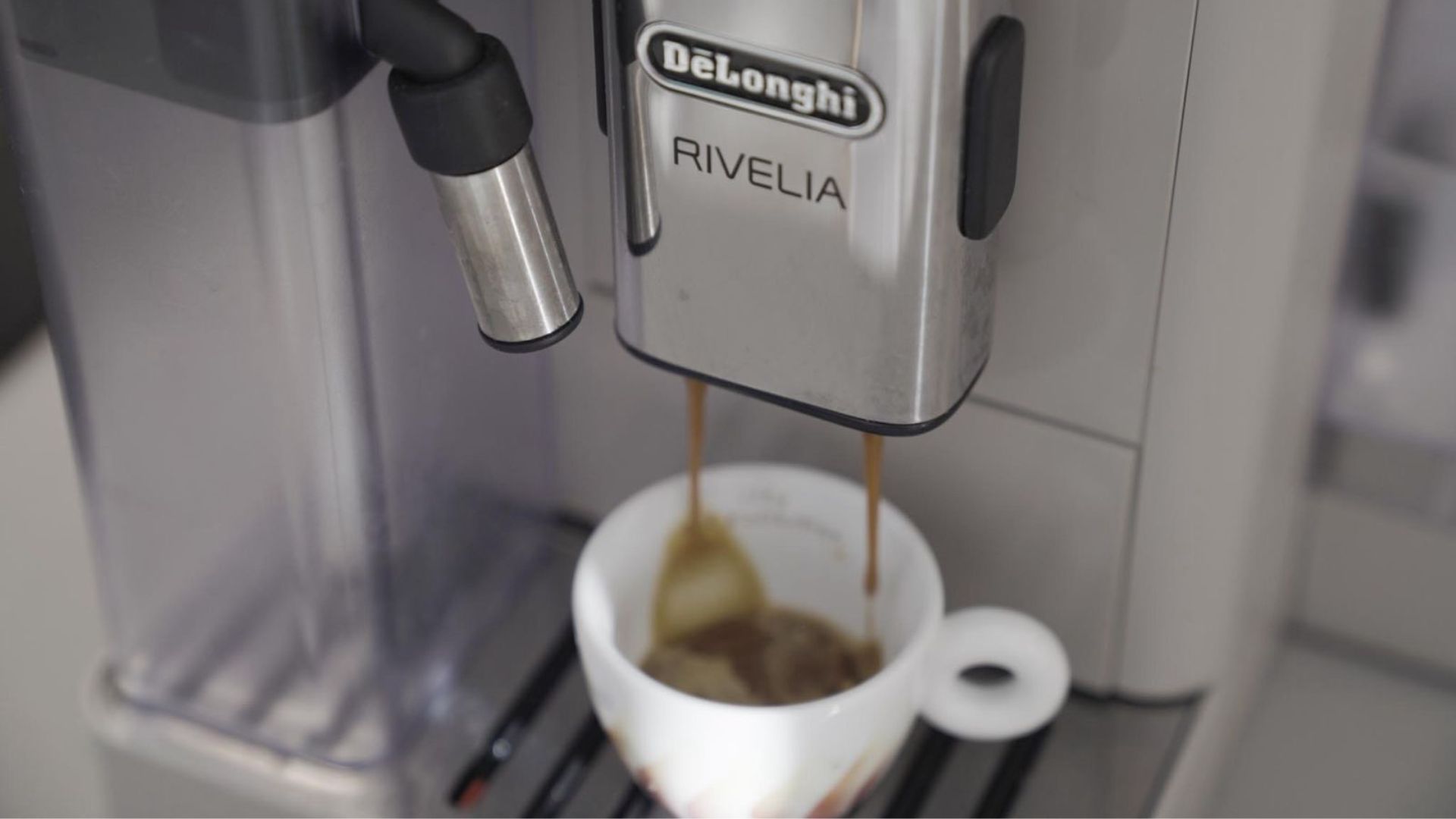
The next test is always an Americano. This takes the delicious, punchy espresso and adds hot water. Simple, right? Wrong. The water needs to be at the perfect temperature. Effectively, it needs to match the espresso. If it’s too cold, it’ll cool the espresso quickly, making it taste bitter. Water that’s too hot will scald the espresso, also making it taste bitter. Luckily for us, the Rivelia has matched the temperature of the espresso, Goldilocks style. My Americanos are always smooth, well-balanced, and a very drinkable temperature. Brewing time is rarely above 40 seconds unless I’ve requested an extra long coffee or something a little more fancy.
Test 3: cappuccino
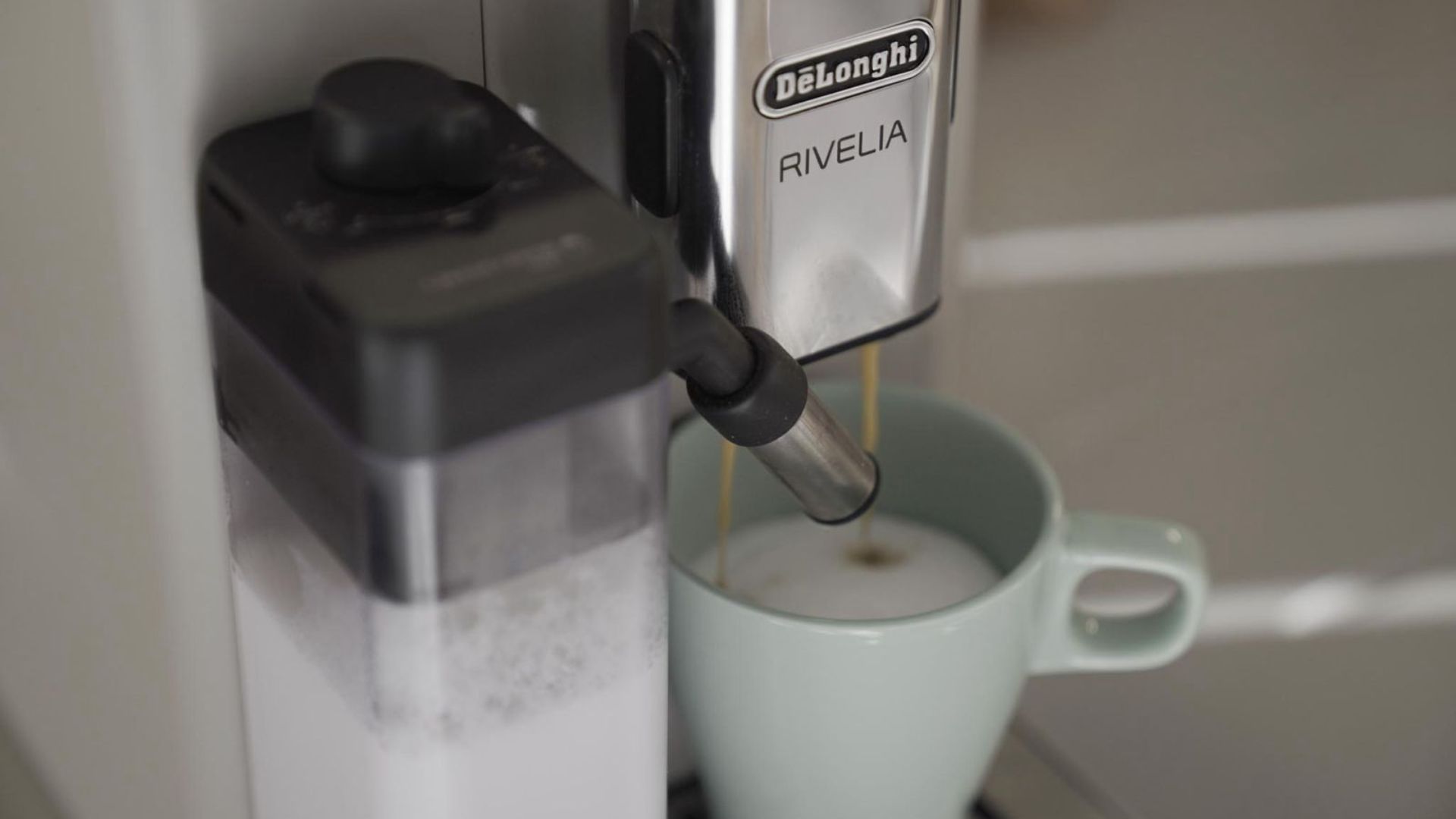
The final test is how De’Longhi steams milk and adds it to coffee. In other words, I need to check that your flat whites, cappuccinos, and lattes are going to be as creamy and dreamy as the ones from your favourite barista.
The first way I test this is with dairy milk. Now, I’ve already got a lot of experience with De’Longhi’s milk steaming technology and I know that it’s reliably good. The cappuccinos that I’ve made in this serve as proof. It warms the milk up just enough to tip it into some smooth sweetness. The cappuccino has that gorgeous, vanilla-sweet edge, a silky smooth mouthfeel, and a good dose of thick foam on top, which is exactly what you want in a cappuccino. I liked the strength exactly as it was, but my partner made his a little weaker on the profile setting. Of course, the De’Longhi remembered this.
The next challenge for the Rivelia is non-dairy milks because these have lower burn points and they can generally be more temperamental when you’re steaming them. You’ll need to use the barista versions of your milk because these have enough protein to hold the foam structures, but the Rivelia will deliver some sensational results. The image above is actually non-barista almond milk and you can’t quite see, but the foam is still really impressive. It’s not quite microfoam, so there’s a little more ‘bubble’ to the texture, but it was still really delicious. Again, the almond was gently sweetened, not split or burned, only enhancing the already nutty notes of my latte.
Cleaning and maintenance
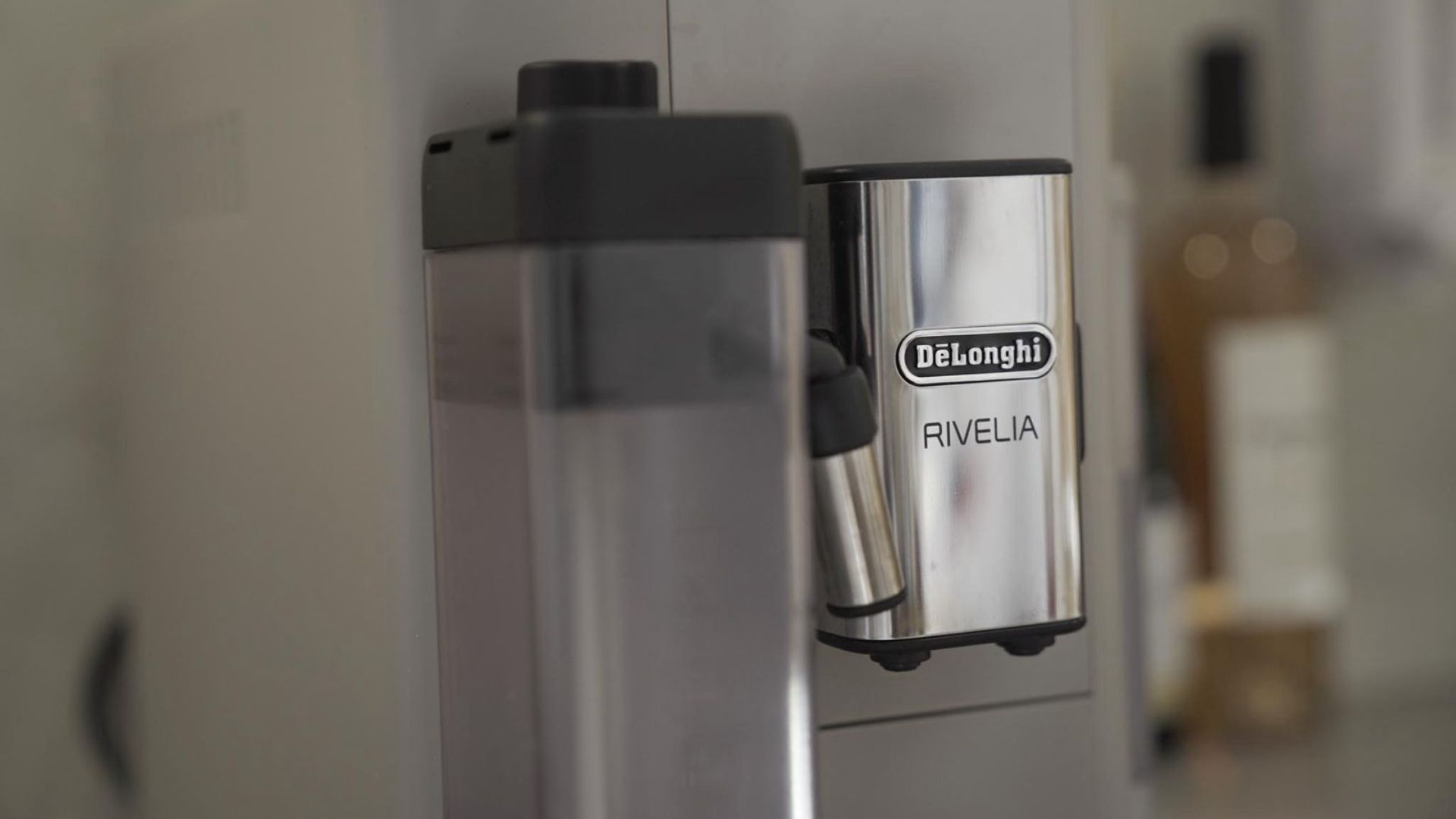
As if the Rivelia wasn’t already smart and independent enough, it takes charge of the cleaning routine. Any time that you steam milk, the Rivelia will ask you to twist the setting to let it clear any milk out of the system. This stops the milk from drying and solidifying in the pipes.
The Rivelia also has special cleaning settings and systems that will help stay on top of scale, mould, and general wear and tear. You'll need to remove the drip tray and get rid of any grounds when you're cleaning, but there aren't many corners or places where dirt might get stuck.
How does it compare?

I’ve already given the Rivelia a latte love — sorry — so it’s clear that this is one of the best automatic bean-to-cup machines on the market. For what it does, I think £750 is actually good value. However, if you don’t feel the need to have personalised profiles and a machine that can predict which coffee out of a selection of eleven customisable different orders you need, it is possible to save a little. Philips makes the 5400 Series coffee machine that retails around £150 less. It has a slightly softer aesthetic, still offers 12 different types of coffee, and it delivers consistently good results. I have to say that I still think it feels a little cheaper than the Rivelia and you don’t get the colour options or customisable functions, but from a flavour perspective, it’s pretty good.
Alternatively, if you’re willing to work for your coffee, you could invest in the Sage Bambino Plus. You’re on your own with regard to measurements here, because this is an old-school espresso machine. However, it looks the part and — once you’ve learned how to brandish some barista skills — it will taste the part too. Just make sure you have a coffee grinder (or buy pre-ground coffee) and some expert help for how to make coffee using an espresso machine, because you’re weighing, tamping, and frothing the milk yourself here.
Should you buy it?
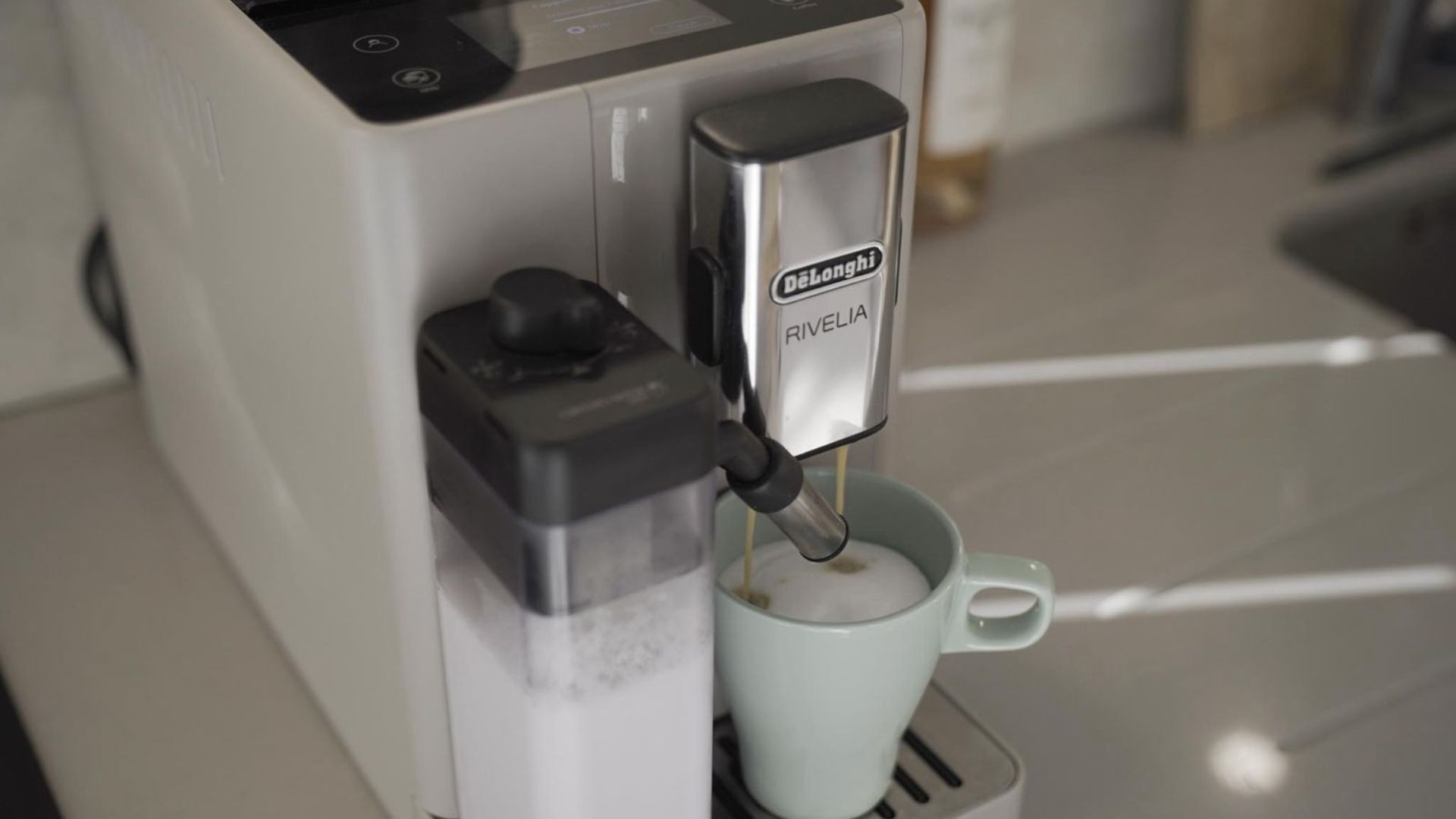
If you want a top of the range, ultra premium, automatic coffee machine, this is undoubtedly the best investment you’ll make. As a barista, I wouldn’t buy anything else. However, if you’re a bit strapped for cash, there are options that can knock £150-300 off the price tag with only a few compromises.
How we test
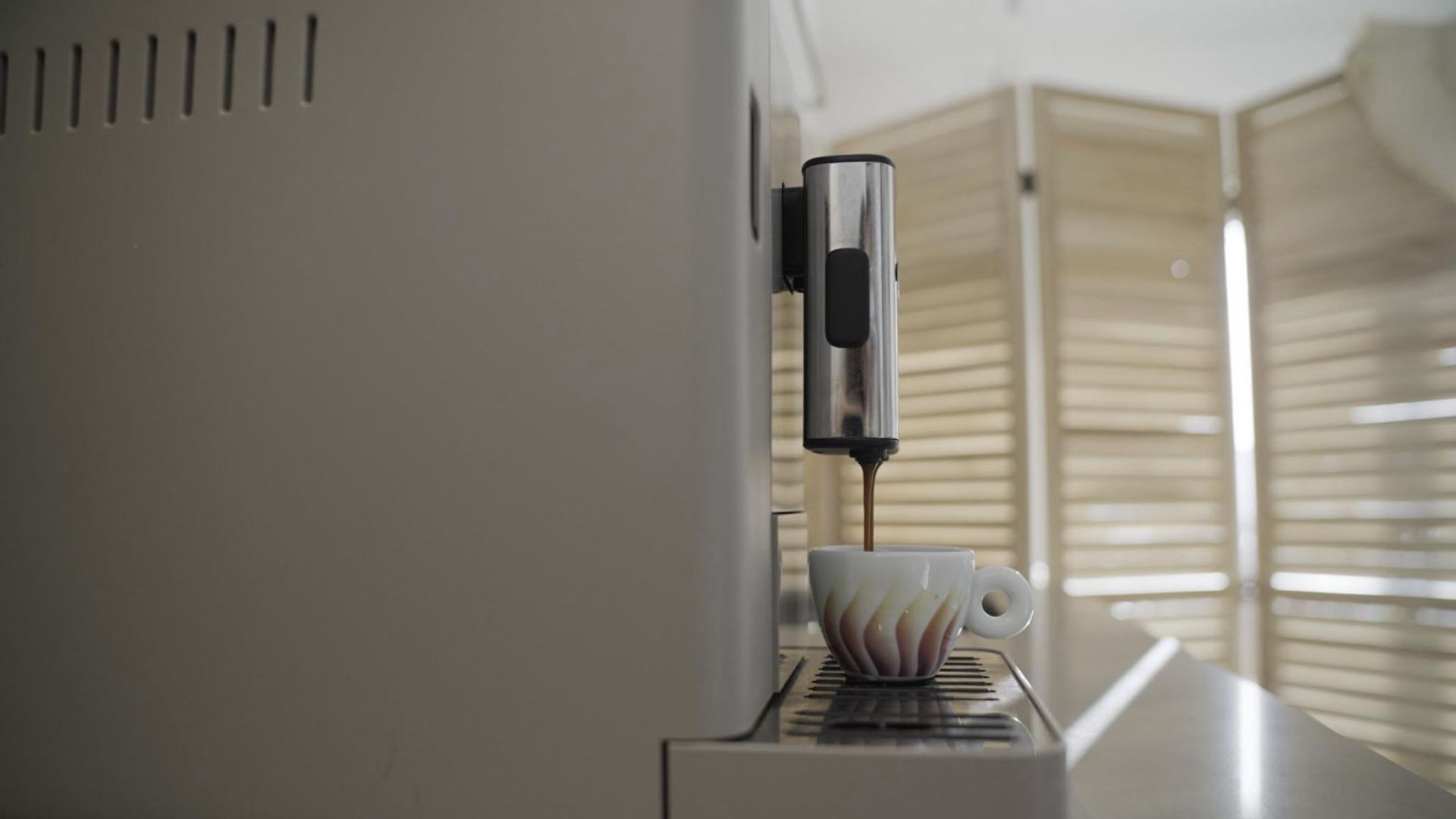
At woman&home, we take our coffee maker tests really seriously. As a former barista, I can get very emotionally involved with coffee (especially if I haven't had my morning espresso). That's why I make sure that each and every coffee maker that we review has gone through rigorous rounds of testing. I make hundreds of cups of coffee, from espressos to Americanos and lattes. I froth dairy and non-dairy milks on the daily to make sure that the coffee maker is consistently delicious across the board.
I also make notes on the value and comparative performance of the coffee machine. I'll put it up against other best-selling models, ones that are a similar price, and similar size. That way, when it comes to writing up a review, I'll be able to give you a great idea of exactly what to expect when one of these arrives at your home.
Sign up for the woman&home newsletter
Sign up to our free daily email for the latest royal and entertainment news, interesting opinion, expert advice on styling and beauty trends, and no-nonsense guides to the health and wellness questions you want answered.

Laura is woman&home's eCommerce editor, in charge of testing, reviewing and creating buying guides for the Homes section, so you'll usually see her testing everything from the best dehumidifiers to sizing up the latest Le Cruset pot. Previously, she was eCommerce editor at Homes & Gardens magazine, where she specialised in covering coffee and product content, looking for pieces tailored for timelessness. The secret to her heart is both simplicity and quality. She is also a qualified Master Perfumer and holds an English degree from Oxford University. Her first editorial job was as Fashion writer for The White Company.
-
 Anna Kendrick's sophisticated spring outfit effortlessly blends four key trends – and it's so easy to recreate
Anna Kendrick's sophisticated spring outfit effortlessly blends four key trends – and it's so easy to recreatePairing four big trends together is not easy, but Anna Kendrick made it look easy. Here's how you can do it too.
By Rivkie Baum Published
-
 Are Jamie and Dave from MAFS Australia still together?
Are Jamie and Dave from MAFS Australia still together?If you're wondering whether Jamie and Dave went the distance when MAFS Australia 2025 ended, we've got the lowdown
By Lucy Wigley Published
-
 Reese Witherspoon’s elegant white mini dress reminds us of Chanel in the best way and boucle will never go out of style
Reese Witherspoon’s elegant white mini dress reminds us of Chanel in the best way and boucle will never go out of styleMini dresses aren’t for everyone, but Reese Witherspoon’s timeless, sophisticated outfit is something we can all be inspired by.
By Emma Shacklock Published